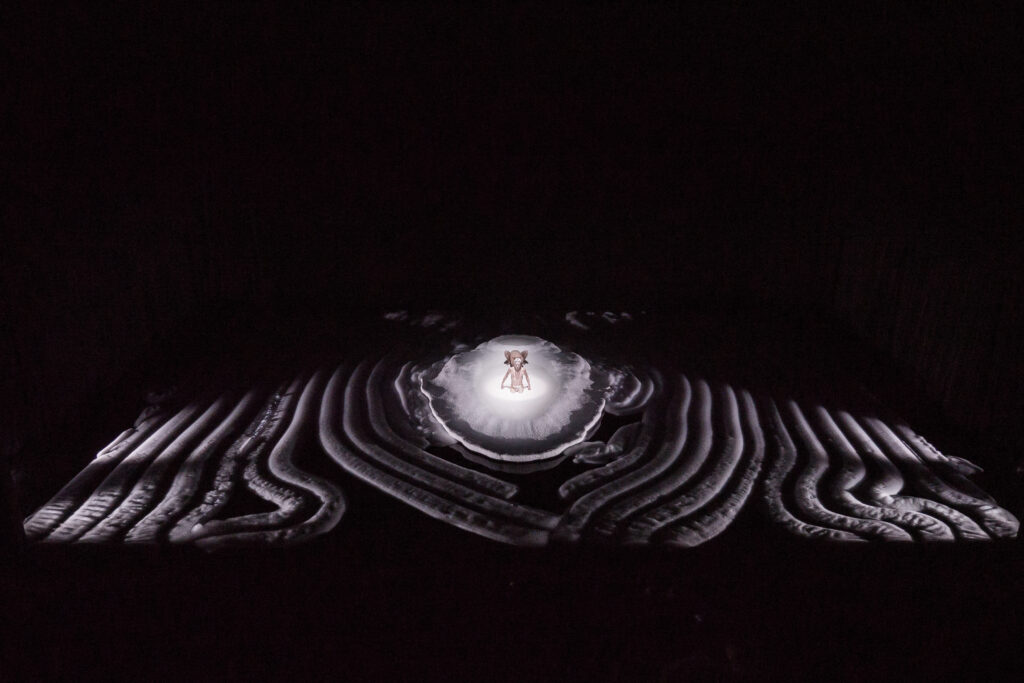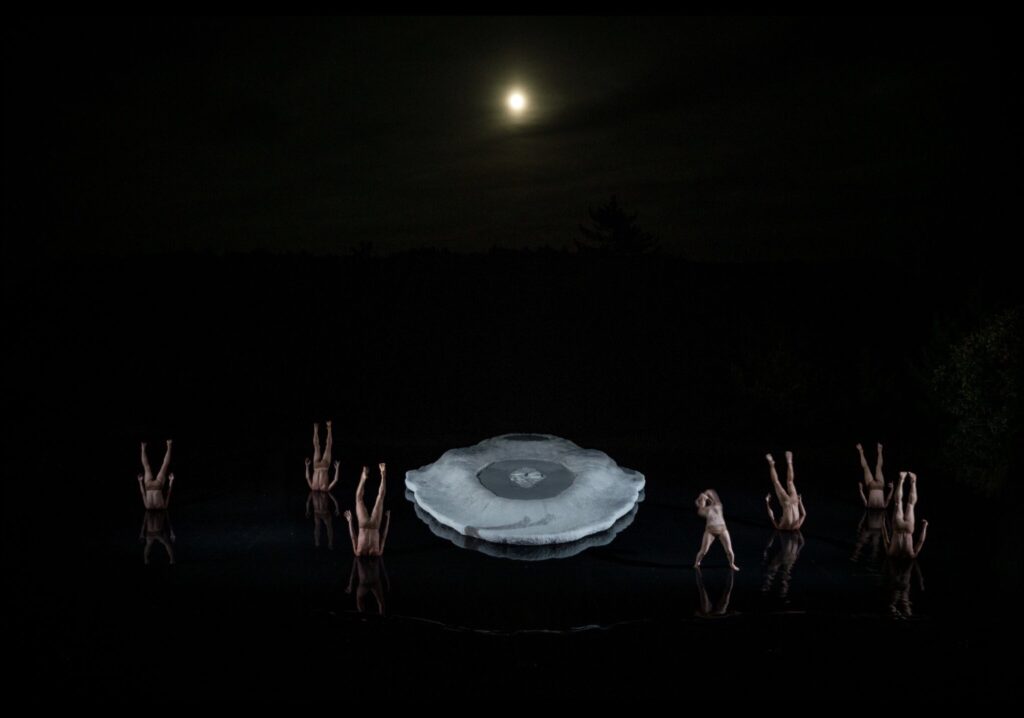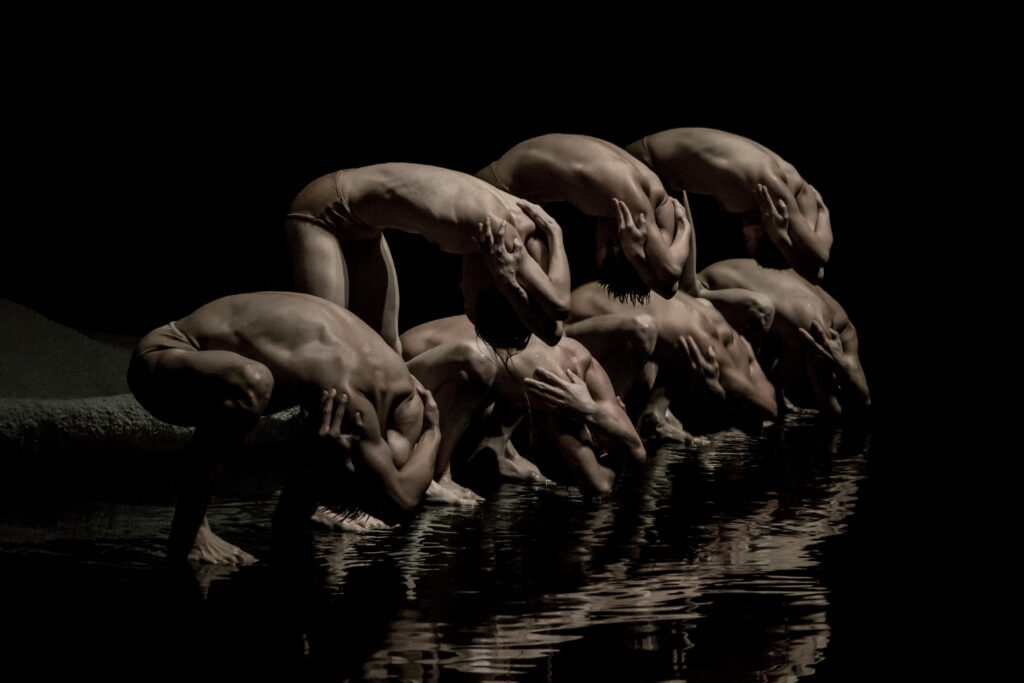b
Vessel by Damien Jalet
Vessel (2015) is a strange and lovely creation by choreographer Damien Jalet in collaboration with multidisciplinary sculptor Kohei Nawa.
Human bodies take totemic, writhing, fluid, and torturous forms, combining and resisting assimilation, constantly morphing and shifting. Slightly uncanny, it feels like a ritual that is being enacted, and has the clarity of a hallucinatory vision. Seeming to take place in a black void of night, on a body of water dimly moonlit and only made visible by its dark ripples, it has the terrible perfection of a transposed dream.



“At the intersection between sculpture and choreography, the two art forms meet and become indivisible. Taking the contradictions of the human body as their starting point, the artists, together with a group of seven dancers, create a fascinating work embracing regeneration and deterioration, solid and liquid, anatomy and mythology.”
Jalet also choreographed the iconic dance sequences in 2018’s Suspiria. The unnerving, complex, unique and vital qualities of his art feel alienating, but necessary – inevitable the moment that they are revealed. They are beautiful in the sense of something that is not known, not imagined, not thought of, until he calls it forth, at which point it answers an unspoken call in us.